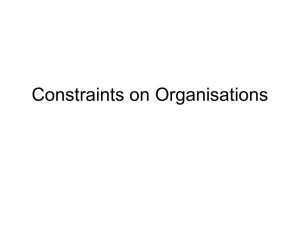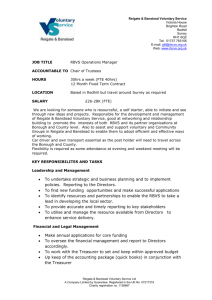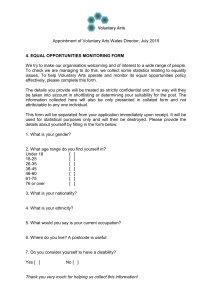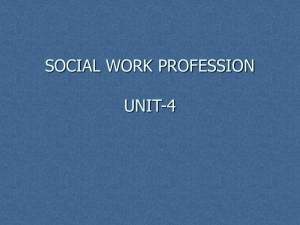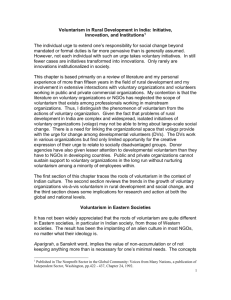Role of Voluntary Health Sector in India
advertisement
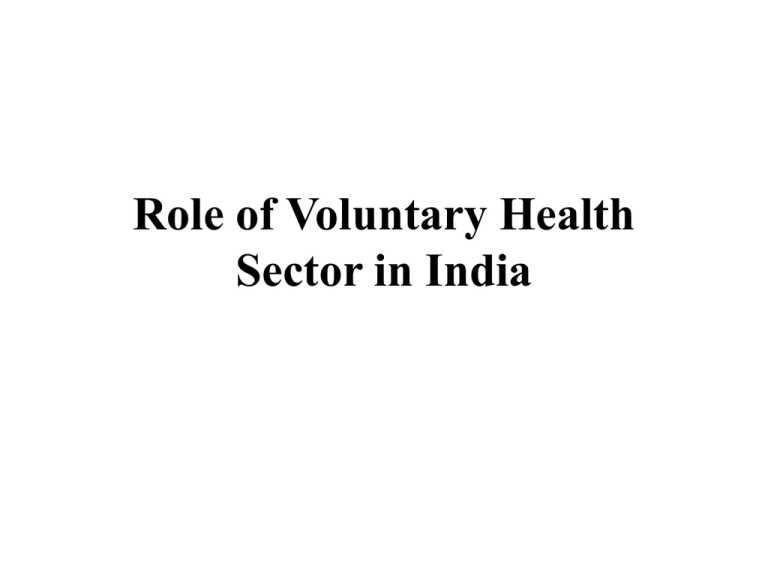
Role of Voluntary Health Sector in India Framework: • • • • • • • Introduction Definition of voluntary sector Functions of voluntary sector Strengths of voluntary sector Weakness of voluntary sector Role of voluntary health sector Examples &Their role Introduction: • Voluntarism: Voluntarism is a phenomenon of ancient Indian society, where people shared skills, expertise, services, resources and knowledge among the members of communities living together. • In the present era, voluntarism manifests through organizations ,associations, organized structures such as Community Based Organizations , VoluntaryOrganizations (VOs), NonGovernmentOrganizations(NGOs) . Volunatary organization: • A voluntary organization is a non-governmental ,autonomous, non- profit making organization supported mainly by voluntary contributions in cash and kind from the general public or certain segments of the public, specialized to carry out a number of functions related to development, aid and emergency relief. Functions of Voluntary organization • • • • • • Supplementing the work of Govt agencies Pioneering Education Demonstration Guarding the work of Govt agencies Advancing health legislation The main characteristics of voluntary agencies would be that they: • It should be established by a group of private individuals or NGOs • It should be autonomous • It should be managed by an independent, volunteer board of directors elected periodically by the members • It should have a clearly defined constitution and be accountable to that constitution • It should be financially independent; • It should have a formal legal status, permanent headquarters and employ • professional or volunteer staff; and • It should have humanitarian objectives and programmes. Strength of Voluntary Organization: • Dissemination of knowledge regarding local conditions and close communication with the local communities enabling them to assess local needs of the people and motivating them and enlisting their ready participation in the development programmes. • Flexibility of approach, less role bound, no rigid guidelines as in the government departments. This enables them to innovate, do action research and come out with the strategies really related to local needs. • Less complex administrative structure as compared to government departments .Much closer to the poorest section of the society and they interact with the section directly across the table. Strengths continued……………… • Use of local resources. • Committed to achieve local self sufficiency. • Involvement of women in the voluntary agencies programme. • Access to unpaid or less paid workers. • They can provide more efficient delivery of services at substantially lower costs and create gainful employment Weakness of Voluntary Organizations: • Their in ability to co-operate with each other • Their accountability &transparency is not proved by &large • Their operations are small in scale • Uncertainity over availability of human & finanacial resources hampering planning of their activities Role of Voluntary sector: • • • • • Specialized community health programmes Integrated Development Programmes Health Care for Special group of people Government Voluntary Orhanizations Health work sponsored by Rotary Clubs,Lions clubs • Health Researchers and activists • Campaign groups Examples: • VHAI(Voluntary Health Association of India) • SEARCH(Society for Education ,Action &Research in Community Health) • CRY(Child Relief &You) • Indian Red Cross Society • Hind Kusht Nivaran Sangh • Tuberculosis Association of India • The Kasturba Memorial Fund SEARCH: • • • • Women &Child Health Adolescent education Alcohol prevention& De-addiction Tribal Health &Development -Malaria prevention -Economic Empowerment of Tribals -Establishment of Community Youth -Cultural Rejuvention • Programmes for Tribal children Indian Redcross Society: • • • • • • Relief Milk & Medical Supplies Armed Forces Maternal& Child welfare services Family Planning Blood Bank &First AID




